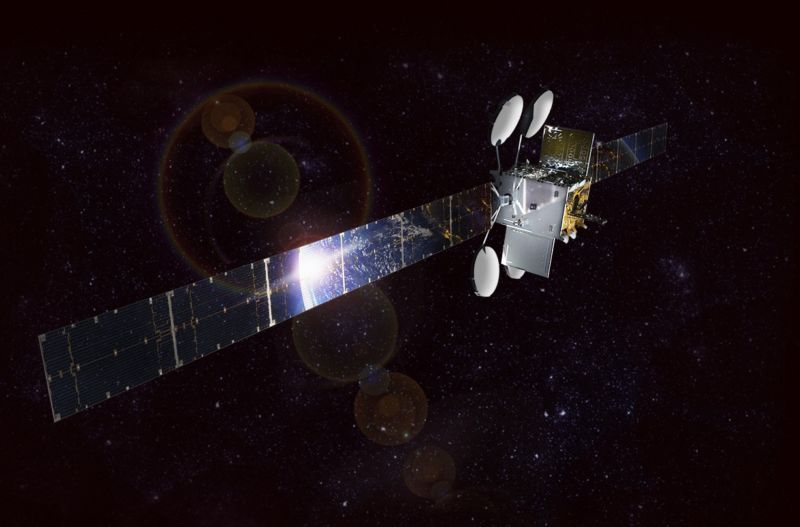Viasat gets $87.1M for rural broadband; no word yet on price or exact data caps.
The Federal Communications Commission is giving $87.1 million in rural-broadband funding to satellite operator Viasat to help the company lower prices and raise data caps.
The FCC’s Connect America Fund generally pays ISPs to expand their networks into rural areas that lack decent home Internet access. Viasat’s satellite service already provides coverage for 98 percent of the US population in 50 states, so it doesn’t need government funding to expand its network like wireline operators do. But Viasat will use the money to offer Internet service “at a lower cost to consumers, while also permitting higher usage allowances than it typically provides in areas where it is not receiving Connect America Fund support,” the FCC said in its announcement yesterday.
Viasat’s $87.1 million will be used over the next 10 years “to offer service to more than 121,700 remote and rural homes and businesses in 17 states.” Viasat must provide speeds of at least 25Mbps for downloads and 3Mbps for uploads.
While the funding for Viasat could certainly improve access for some people, the project helps illustrate how dire the broadband shortage is in rural parts of many states. Viasat’s service is generally a last-ditch option for people in areas with no fiber or cable and where DSL isn’t good enough to provide a reasonably fast and stable connection. Viasat customers must pay high prices for slow speeds and onerous data limits.
FURTHER READING
SpaceX says 12,000 satellites isn’t enough, so it might launch another 30,000
Future services relying on low-Earth-orbit satellites from companies such as SpaceX and OneWeb could dramatically boost speeds and data caps while lowering latency. But Viasat’s service still relies on satellites in geostationary orbits about 22,000 miles above the planet and suffers from a latency of nearly 600ms, much worse than the 10ms to 20ms from fiber services (as measured in customer homes by the FCC in September 2017). The FCC’s Connect America Fund classifies Viasat’s service as “high latency,” which is less than or equal to 750ms.
Americans pay for the Connect America Fund through fees on their phone bills.
Prices and data caps are not revealed.
A Viasat spokesperson would not tell us what prices and data caps will be applied to the company’s FCC-subsidized plans. Viasat said it will provide the required 25Mbps service “along with an evolving usage allowance, and at FCC-defined prices, to certain areas, where we will be subject to a new range of federal and state regulations.”
The materials released by the FCC yesterday don’t provide price and data-cap information, either. We contacted the FCC and will update this article if we get any answers.
Viasat’s current prices and data allotments are pretty bad, so hopefully, there will be a significant improvement. Plans and pricing vary by ZIP code; offers listed on BroadbandNow include $50 a month for download speeds of up to 12Mbps and only 12GB of “priority data” each month. The price rises after a two-year contract expires.
“Once priority data is used up, speeds will be reduced to up to 1 to 5Mbps during the day and possibly below 1Mbps after 5 pm,” BroadbandNow’s summary says. Customers can use data without affecting the limit between 3 am, and 6 am.
Other plans include $75 a month for speeds of 12Mbps and 25GB of priority data; $100 a month for 12Mbps and 50GB; and $150 a month for 25Mbps and “unlimited” data. Even on the so-called unlimited plan, speeds “may be prioritized behind other customers during network congestion” after you use 100GB in a month. Because of these onerous limits, Viasat lowers streaming video quality to reduce data usage. Viasat says it provides speeds of up to 100Mbps but only “in select areas.”
Viasat also charges installation fees, a $10-per-month equipment lease fee, and taxes and surcharges. Viasat offers a two-year price lock, but this does not apply to the taxes and surcharges. To avoid signing a two-year contract, you must pay a $300 “No Long-Term Contract” fee.
New satellites in 2021
Viasat doesn’t have to offer the FCC-subsidized plans right away. Under FCC rules, providers must offer the specified plans to 40 percent of homes and businesses within three years, to 60 percent within four years, 80 percent within five years, and 100 percent within six years.
But Viasat won’t wait for new satellite launches to provide subsidized service. “We will use our current satellite fleet to commence that FCC-defined service offering, and, as with all technologies, we anticipate introducing improvements over the next 10 years,” Viasat told Ars.
New Viasat satellites planned for launch in 2021 and 2022 are expected to provide higher download speeds and total network capacity. However, latency will still be a problem because of the planned satellites’ 22,000-mile altitude.
Viasat’s FCC funding must be used in rural parts of Alabama, Arizona, California, Colorado, Florida, Georgia, Idaho, Kentucky, Louisiana, Maine, Montana, New Mexico, Utah, Washington state, West Virginia, Wisconsin, and Wyoming. The FCC announced another $2.1 million in funding for a few small companies to provide service to about 1,300 homes and businesses in parts of Illinois, Iowa, Minnesota, South Carolina, and Wisconsin.
The newly distributed funding originates from a Connect America Fund auction held last year. “In total, the Connect America Fund Auction last year allocated $1.488 billion in support over the next 10 years to expand broadband to more than 700,000 unserved rural homes and small businesses nationwide,” the FCC said.
